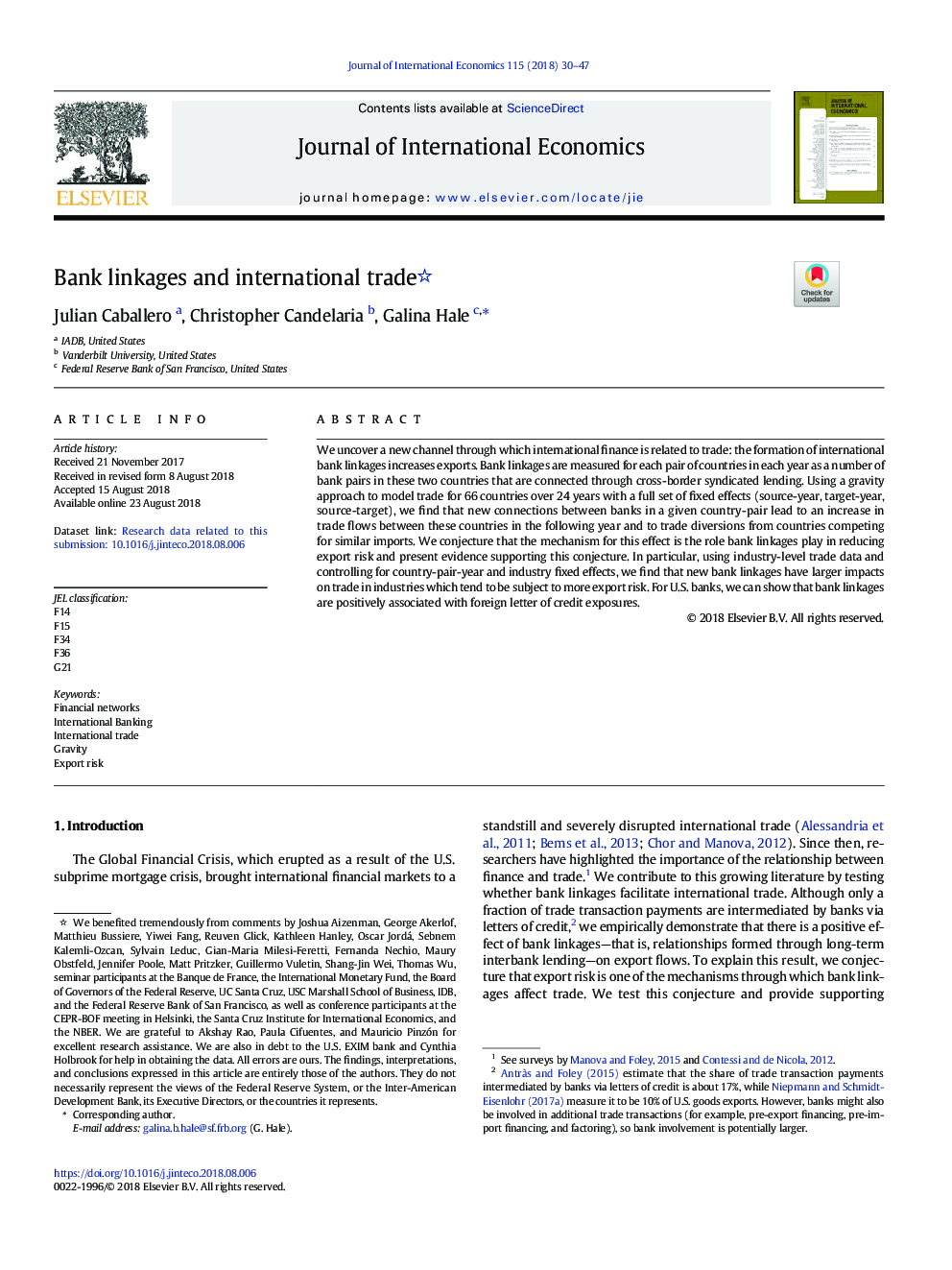| Article ID | Journal | Published Year | Pages | File Type |
|---|---|---|---|---|
| 10140472 | Journal of International Economics | 2018 | 18 Pages |
Abstract
We uncover a new channel through which international finance is related to trade: the formation of international bank linkages increases exports. Bank linkages are measured for each pair of countries in each year as a number of bank pairs in these two countries that are connected through cross-border syndicated lending. Using a gravity approach to model trade for 66 countries over 24â¯years with a full set of fixed effects (source-year, target-year, source-target), we find that new connections between banks in a given country-pair lead to an increase in trade flows between these countries in the following year and to trade diversions from countries competing for similar imports. We conjecture that the mechanism for this effect is the role bank linkages play in reducing export risk and present evidence supporting this conjecture. In particular, using industry-level trade data and controlling for country-pair-year and industry fixed effects, we find that new bank linkages have larger impacts on trade in industries which tend to be subject to more export risk. For U.S. banks, we can show that bank linkages are positively associated with foreign letter of credit exposures.
Related Topics
Social Sciences and Humanities
Economics, Econometrics and Finance
Economics and Econometrics
Authors
Julian Caballero, Christopher Candelaria, Galina Hale,
